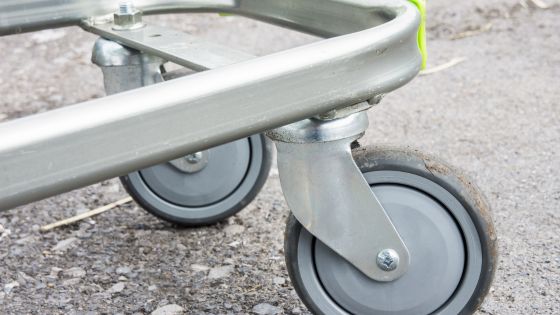In the ever-evolving landscape of industrial equipment and logistics, the humble caster wheel has emerged as an unsung hero. These unassuming wheels play a pivotal role in the smooth and efficient movement of heavy loads in a wide range of industries. In this article, we will delve into the fascinating journey of caster wheels and explore the latest innovations in the market, with a particular focus on high-quality caster wheels from Caster Central.


Historical Development of Caster Wheels
Caster wheels have come a long way since their inception. In the early days, casters were simple, rudimentary devices primarily crafted from wood and metal. These primitive contraptions posed significant limitations in terms of maneuverability and load-bearing capacity. However, with the advent of the industrial revolution, caster wheel technology underwent a remarkable transformation.
A. Early forms of casters and their limitations
- Primitive materials and designs: The earliest casters were fashioned from wood and iron, which were readily available materials. These basic materials were sturdy but lacked the finesse required for smooth mobility.
- Challenges in maneuverability: Early casters had limited swiveling capabilities, making it difficult to navigate around tight corners and obstacles. This posed significant challenges in industrial settings.
B. Industrial revolution and caster wheel innovations
- Introduction of ball-bearing casters: The 19th century witnessed a breakthrough with the introduction of ball-bearing casters. This innovation revolutionized the industry by enabling smoother and more precise movements.
- Advancements in materials and production techniques: With the industrial revolution in full swing, casters began to incorporate advanced materials like steel and rubber, making them more resilient and durable.
C. Modernization of caster wheels
- Integration of swivel mechanisms: Modern caster wheels feature advanced swivel mechanisms, allowing for 360-degree rotation. This newfound agility proved invaluable in industries where maneuverability is crucial.
- Specialized designs for various applications: Caster technology has evolved to accommodate specific industry needs, such as healthcare, aerospace, and logistics, with tailored designs for each sector.
Materials and Manufacturing Advancements
The performance of caster wheels is heavily reliant on the materials used in their construction. Over the years, material science has played a pivotal role in enhancing caster wheel capabilities.
A. The role of materials in caster wheel performance
- Introduction of polyurethane and rubber compounds: The development of specialized materials like polyurethane and rubber compounds has significantly improved the load-bearing capacity and durability of caster wheels.
- Impact of material selection on load capacity and durability: Choosing the right material for caster construction has a profound effect on its ability to withstand heavy loads, resist wear and tear, and provide a smooth rolling experience.
B. Precision engineering and manufacturing techniques
The modern caster wheel is a testament to precision engineering and manufacturing excellence.
- CNC machining for precision parts: Computer Numerical Control (CNC) machining ensures that caster components are manufactured to exact specifications, enhancing their overall performance and longevity.
- Quality control standards in caster production: Stringent quality control measures have become the norm in caster production, guaranteeing that each wheel meets the highest industry standards.
C. Customization options for specific industry needs
Caster manufacturers have recognized the importance of catering to diverse industries, leading to the development of customized solutions.
- Tailored caster designs for healthcare, aerospace, and logistics: Caster Central, among others, offers specialized caster designs tailored to the unique requirements of industries such as healthcare, aerospace, and logistics.
- High-temperature and corrosion-resistant materials: Industries operating in extreme conditions, such as high temperatures or corrosive environments, benefit from caster wheels crafted from materials that can withstand these challenges.
Technological Integration in Caster Systems
The incorporation of cutting-edge technologies has ushered in a new era for caster systems, enhancing their functionality and efficiency.
A. IoT and smart caster wheels
- Real-time tracking and monitoring capabilities: Smart caster wheels equipped with IoT technology allow for real-time tracking of loads, ensuring optimal efficiency and security in material handling.
- Predictive maintenance for caster systems: IoT-enabled casters can predict maintenance needs, reducing downtime and maintenance costs.
B. Ergonomic designs for reduced workplace injuries
- Impact on productivity and employee well-being: Ergonomically designed caster systems contribute to a safer and more comfortable workplace, reducing the risk of injuries and boosting overall productivity.
- Implementing shock-absorbing technologies: Advanced shock-absorbing technologies in caster wheels safeguard delicate cargo and equipment from damage during transit.
C. Eco-friendly caster solutions
- Sustainable materials and production processes: Caster manufacturers are increasingly adopting sustainable materials and eco-friendly production processes to minimize their environmental footprint.
- Reducing the environmental footprint of caster wheel manufacturing: Sustainable practices, such as recycling and reducing waste, are becoming integral to the caster production process.
Future Trends and Innovations
The future of caster wheel technology promises even more exciting developments on the horizon.
A. Exploring the potential of 3D printing in caster wheel production
- Rapid prototyping and customization: 3D printing allows for the rapid prototyping of caster wheel designs, facilitating customization for specific applications.
- Reduced lead times and waste: 3D printing minimizes lead times and waste, making it a cost-effective and environmentally friendly manufacturing option.
B. Advancements in load-bearing capacities
- Ultra-heavy-duty caster wheels for specialized industries: Industries requiring extreme load-bearing capacities will benefit from the development of ultra-heavy-duty caster wheels.
- Innovations in load distribution technologies: New technologies aim to optimize load distribution across caster systems, ensuring greater stability and safety.
C. Integration of AI and machine learning for autonomous mobility
- Self-navigating caster systems: AI and machine learning are paving the way for self-navigating caster systems that can adapt to changing environments and operate autonomously.
- Enhanced safety and efficiency in material handling: AI-powered casters enhance safety by minimizing the risk of collisions and increasing the efficiency of material handling processes.
The evolution of caster and wheel technologies has been nothing short of remarkable. From humble beginnings as basic wooden and metal constructs, caster wheels have evolved into sophisticated, high-tech components that play a vital role in modern industries. The continuous advancements in materials, manufacturing techniques, and technological integration have transformed caster wheels into highly efficient, customizable, and environmentally conscious tools for material handling. As we look toward the future, the potential for further innovations in the caster wheel industry is boundless, promising to redefine the way we move and manage heavy loads in various sectors. For those seeking high-quality caster wheels, Caster Central stands at the forefront of these innovations, providing solutions that meet the diverse needs of industries across the globe.


























